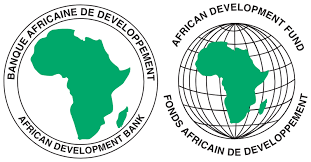Amid the seeming efforts being put in place by stakeholders in the country’s electricity sector, the obvious emerged over the weekend as Nigeria went blank in Africa Development Bank’s (AfDB) regulatory reform index.
According to the report, Kenya and Senegal claimed the top spots in the 2024 Electricity Regulatory Index (ERI), demonstrating exceptional progress in power sector governance and regulatory outcomes.
The top 10 countries identified include Senegal, Kenya, Uganda, Namibia, Tanzania and Zimbabwe. Others are Rwanda, Benin, Liberia and Nigeria. The comprehensive assessment, officially unveiled Friday at the Africa Energy Forum in Cape Town, evaluates regulatory frameworks across 43 African countries.
Uganda, Liberia and Niger round out the top five performers, with Niger registering one of the biggest gains, underlining the strong impact of sustained reforms and political commitment to power sector development.
The report says ERI evaluates three dimensions—Regulatory Governance, Regulatory Substance, and Regulatory Outcomes (ROI).
Notably, the ROI, which tracks service delivery and utility performance, recorded the most substantial improvement across the continent. Key findings from the 2024 ERI revealed that Kenya and Senegal led with a score of 0.892, reflecting standout progress in tariff reform, regulatory outcomes, and utility performance.
A remarkable 41 out of 43 participating countries achieved RGI scores above 0.5, representing a significant increase from 24 countries in 2022. The report said: “Countries scoring below 0.500 reduced significantly from 19 in 2022 to just six in 2024.
“Even the lowest-performing country tripled its score—from about 0.10 to 0.33. “The ROI surged from roughly 0.40 in 2022 to 0.62 in 2024, showing that reforms are delivering tangible service improvements on the ground.”
Now in its seventh edition, the ERI shows strong momentum toward more effective, transparent, and impactful regulation, with real-world results beginning to emerge.
“The 2024 ERI shows that Africa’s regulators are stepping up. We are now seeing stronger institutions delivering real results for utilities and consumers.
This shift is critical if we are to achieve Mission 300 and connect 300 million people to electricity by 2030,” says Dr. Kevin Kariuki, AfDB Vice President for Power, Energy, Climate and Green Growth.
For the first time, the 2024 ERI also assessed regional regulatory bodies, recognizing their growing role in harmonizing technical standards and enabling cross-border electricity trade.
As the backbone of Mission 300, ERI continues to inform the design and implementation of national energy compacts—currently active in 12 countries, with another 20 in development.
While celebrating regulatory progress, the report calls for greater focus on regulatory independence, the financial viability of utilities, and the integration of off-grid and mini-grid systems into national frameworks.
The ERI underscores that regulation must translate into better access, affordability, and reliability, especially for underserved rural populations. The report outlines priority areas for enhancing regulatory effectiveness.
They include strengthening regulatory independence, enhancing accountability mechanisms, promoting transparency and predictability, improving stakeholder participation, deepening economic regulation and advancing cost-reflective tariff methodologies.
“The ERI 2024 tells a hopeful story. African countries are not just passing laws—they are implementing them. Regulators are transforming from administrative bodies into strategic institutions with measurable influence.
However, challenges related to independence, financing, and enforcement persist,” said Wale Shonibare, Director for Energy Financial Solutions, Policy and Regulation at the Bank Group.
Launched in 2018, the ERI is a diagnostic and policy tool used by governments, regulators, and development partners to identify gaps, track progress, and prioritize reform efforts.
The 2024 edition incorporates extensive feedback from utilities, regulators, and regional energy bodies. High ERI scores confirm that the electricity regulatory frameworks, in the top-performing countries, are relatively well-developed and robust, and their regulatory authorities are proactive and capable of exerting the necessary regulatory authority on the regulated entities, applying the regulatory laws thoroughly, whilst their utilities respond positively to regulatory norms and guidelines.
Senegal’s independent regulator, the Commission de Régulation du Secteur de l’Electricité (CRSE) was established by law in 2021. This has been a central development in the country’s improved regulatory ranking.
Kenya’s Energy and Petroleum Regulatory Authority (EPRA) was established two years earlier in 2019. Uganda’s decline from the top spot in the index which it had held continuously from 2018 to 2022 is due both to improvements in other countries and internal factors.
Reforms in countries such as Senegal and Kenya have allowed them to overtake. All these variations must, however, be taken in the context of ongoing change and other political factors. Since 2018, Kenya has never been out of the top five countries in the index but in 2022, the former admi imposed a moratorium on new power purchase agreements (PPAs), which parliament was expected to lift in 2025.
In an indication of some solidity to Energy & Petroleum Regulatory Authority (EPRA)’s independence, earlier threats to renegotiate tariffs with some independent power producers (IPPs) were never implemented Electricity Regulatory Index for Africa 2024.
The average scores across the three ERI 2024 pillars i.e. RGI, RSI and ROI were 0.771, 0.690, 0.616 compared with ERI 2022 performance of 0.731, 0.582 and 0.394, respectively. High ROI scores in 2024 have resulted in a shift in the shape of the triangle towards ROI.
The index shows that Kenya and Senegal have the highest scores for regulatory outcomes followed by Zimbabwe, Angola and Tanzania.
This is because all five countries scored highly on facilitating energy access. Responses from regulators in each country shows that each has a national electrification plan that sets out a least-cost electrification pathway including grid, mini-grid, and off-grid systems, that clearly demarcates areas for each system.
The regulator also makes a provision in the tariff for investment by entities in each system. Kenya, for instance, published its national electrification strategy in 2018.
Zimbabwe’s targets for electrification were set in its Vision 2030 plan published in 2018. It added a renewable energy policy in 2020 and a National Policy Roadmap for Electric Mobility in 2022. To understand these figures, a wider context is needed.
While Senegal and Kenya are on the road to universal access, less than half the populations of Angola, Tanzania, and Zimba- bwe have access to electricity. Accelerated implementation of Least-cost electrification pathways will improve this.
The five leading countries on the financial performance and competitiveness metric which is another key factor in measuring outcomes were Democratic Republic of Congo (2 utilities), Congo Rep., Cote d’Ivoire and Djibouti. Namibia, Cameroon, South Africa and Ghana were the highest achievers in terms of service delivery quality.



